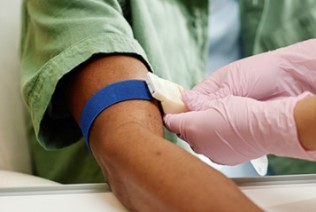
An effective diagnosis of Alzheimer’s disease traditionally hinges on procuring a cerebrospinal fluid specimen or conducting a PET scan for brain imaging. Unfortunately, such procedures are not feasible within the realm of primary care facilities, which typically serve as the initial consultation points for the majority of individuals presenting cognitive concerns.
This diagnostic impediment invariably delays, or even precludes, the confirmation of Alzheimer’s. Consequently, affected individuals may miss the opportunity to benefit from pharmaceutical interventions capable of decelerating the disease’s progression, as well as the chance to participate in clinical trials for prospective therapeutic drugs.
In the pursuit of a more accessible diagnostic tool, researchers have been honing in on the development of blood-based tests for Alzheimer’s. These tests target the detection of certain proteins, notably beta-amyloid and tau, which, when abnormally accumulated, may permeate the bloodstream from the brain. Numerous blood tests designed for Alzheimer’s have yielded encouraging outcomes, although most of the research investigations have yet to be implemented in practical environments such as community clinics.
In a novel study, partially underwritten by the NIH, a team led by Drs. Sebastian Palmqvist and Oskar Hansson of Lund University in Sweden procured blood specimens from patients undergoing cognitive assessment. The study amassed over 500 elderly participants from local primary care settings and an additional cohort of nearly 700 from specialized memory clinics in the vicinity.
The investigative team employed the PrecivityAD2™ test, which quantifies the relative levels of two species of beta-amyloid and assesses the ratio of a subtype of tau protein known as p-tau217—both biomarkers have been previously validated as reliable indicators for Alzheimer’s diagnosis. Building on prior research, they established the necessary biomarker thresholds to confirm the presence of the disease.
In their latest research, they juxtaposed the blood test outcomes with results obtained from cerebrospinal fluid examinations or PET scanning. They also examined how the blood test’s diagnostic accuracy stacked up against conventional clinical assessments conducted by physicians, which typically entail a physical, cognitive testing, and a CT brain scan. The findings were reported in the July 28, 2024, issue of JAMA.
The study found that, across the participant pool, the blood test accurately predicted Alzheimer’s diagnosis with an 88% to 92% precision rate. Additional scrutiny indicated that the measurement focused solely on the p-tau217 ratio was equally dependable as when combined with both biomarkers.
When pitted against clinical evaluations that did not incorporate biomarker testing, the blood test demonstrated superior performance. Without the aid of biomarkers, clinical assessments correctly identified the disease in 73% of cases within specialized memory clinics and in only 61% within primary care environments.
Hansson envisions the recent advancements as a pivotal leap towards the worldwide clinical adoption of a blood test for Alzheimer’s. “Our upcoming objectives revolve around constructing definitive protocols for the clinical application of an Alzheimer’s blood test, ideally commencing in specialized care facilities before transitioning into primary care settings,” he explains. “Efforts to actualize this are presently in motion.”
At present, the test utilized in the investigation is available for purchase in the United States, albeit lacking Food and Drug Administration approval and broad insurance reimbursement. Further research is imperative to validate these findings across a broader spectrum of populations, extending beyond the Swedish demographic encompassed in this study.
